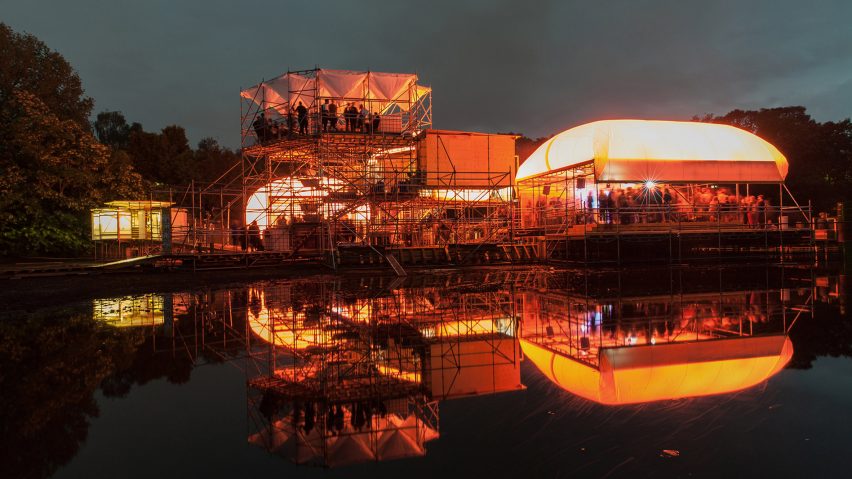
Ten architecture breakthroughs you might have missed in 2018
From a floating university to a network of black female architects, Phineas Harper offers an alternative guide to the year's most important happenings in architecture.
A barrage of "top 10" articles come out at the end of every year, trumpeting the best films, plays, exhibitions and so on of the previous 12 months. It's a straightforward form of journalism, quick to write and fun to digest, perfect for knackered critics (and their readers) at the end of a long year.
The problem with the conventional top 10 formula is that, within a typical word count, it becomes ultra compressed, with too little space to reflect on a tumultuous year in any depth. Consequently the top 10 trope tends to focus on singular objects or events, like the completion of a building, rather than wider themes. Yet it is within wider themes that the most critical and encouraging stories of the year are buried.
Here then, throwing caution (and word counts) to the wind, is my alternative top 10 of architecture in 2018...
Green is the new black
For decades, architecture with an ecological conscience has been variously snubbed as being hippy, nerdy or novelty. Sustainability was seen by architecture as a worthy but tedious technical and legal constraint. Tick-box regulations have been adopted by a compliant but begrudging profession. Sustainable design was necessary but not sexy.
Yet now a growing movement of architects the world over seem to be putting ecology back on the agenda and at the heart of a new cultural vanguard.
At the Venice Biennale, Eero Lunden's Nordic Pavilion comprised a family of giant glowing bubbles gently pulsating with atmospheric changes in the biennale garden. For Lunden, it was a poetic exploration of humanity's relationship to the planet and our impact on it.
Meanwhile, in the United Arab Emirates, the inaugural Sharjah Architecture Triennial, under the curatorship of RCA dean Adrian Lahoud, is setting out to explore the rights of future generations – a question with implicitly ecological dimensions. The festival's first public lecture in October was in fact given not by an architect at all, but by Lumumba Di-Aping, chief negotiator for the G77 nations at the 2009 climate talks in Copenhagen.
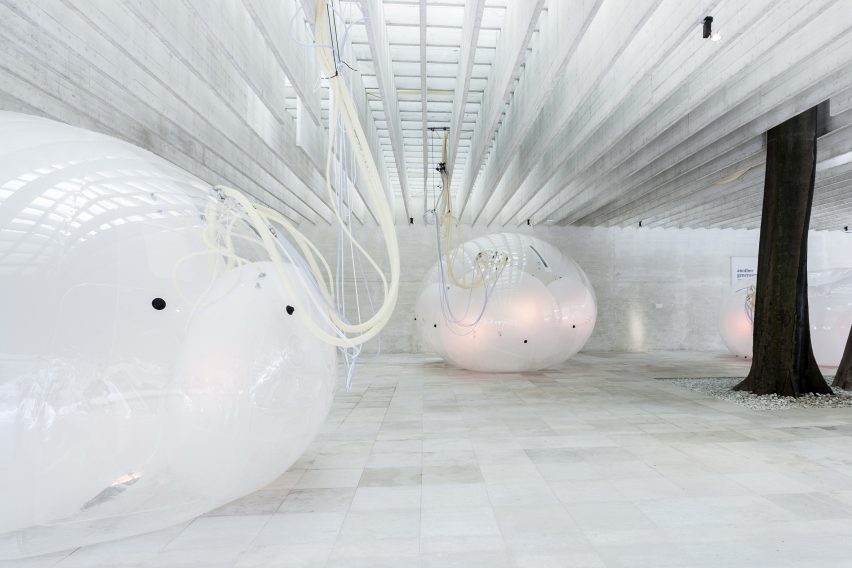
Across the Atlantic, Dutch curator team Rotor has pulled out of the Chicago Biennale in protest of its sponsorship from oil giant BP.
Meanwhile in London, when Foster + Partner's Bloomberg HQ won the Stirling Prize, in part thanks to its claim to be the greenest office building ever, there was outcry from architects. In the past we might have accepted the decision more readily, but this year the announcement was greeted with consternation. Numerous commentators pointed out the absurdity of labelling a building requiring an entire quarry's worth of imported stone as sustainable.
Architects' tolerance for specious greenwash has worn thin. There is an acute renewed movement for ecological design stirring. With 12 years on the IPCC's countdown to an irreversible climate tipping point, it couldn't come too soon.
Shitty Architecture Men list goes viral
In March, the Shitty Architecture Men list emerged on Google Drive and quickly went viral. A catalogue of allegations against prominent men in practice and academia quickly populated – some vague, some downright abominable.
Its authors were keen to point that "nothing here is represented as legally true" but the repercussions of this public tool for anonymous whistleblowing were very real.
The list was a response to systemic instances of abuse in the industry enabled by our patriarchal structures. It was far from a perfect tool of justice but was never intended to be one – just as there is no single cause of abuse, so too there is no single tool to confront it.
For men in architecture, the list has helped us realise that sexual harassment is not an isolated vice perpetuated by a malicious minority of bad guys, but an endemic social problem in which we are all complicit. We all were raised, trained and work in a patriarchal system and will continue to reproduce that system until we actively reject it. While there is nothing to celebrate about the context which led to the Shitty Architecture Men list's creation, I suspect it will be remembered as a watershed moment and its creators should be thanked.
Housing campaigners shift the dial
There are numerous stories heralding the slow but steady return of British social housing. After decades of bipartisan belief that the market could and would deliver homes and manage land ownership effectively, the cracks in the system have become incontrovertible. Local authorities, housing associations and social investors have started to up their game, commissioning high quality homes with gathering momentum.
An unexpected boost to this resurgence was the government's announcement in October that it would abolish the loathed Housing Revenue Account cap, which prevented councils from borrowing to invest in their housing stock. The decision came after years of pressure from campaigners and opposition politicians. It represents a triumph of concerted activism successfully removing a crucial barrier to new waves of good domestic architecture in the UK, and reflects the rise of increasingly well-organised housing campaigns.
In some areas, urban development is now at the forefront of local politics. While Brexit has dominated the national conversation, in the May local elections, candidates in some local authorities found development was the biggest issue on the doorstep. Nowhere was this more evident than Haringey in London, where councillors who supported a controversial £4 billion partnership with Australian property developer Lendlease were forced out of power by a coalition of housing campaigners including architects. Many struggles are ongoing but 2018 has seen some crucial breakthroughs which should encourage housing campaigners to regroup for the year ahead.
A university that floats
From May to September, self-declared anti-utopian architectural experimenters Raumlabor brought together a dizzying array of contributors to create the Floating University. Building a village of makeshift structures in the rainwater runoff basin of Tempelhof airport in Berlin, Raumlabor staged a summer-long investigation of urban practices in the face of an uncertain future combining fiction, art, science and design.
The watery site was both an elaborate metaphor for the extreme environments in which the architects of tomorrow might need to work and a practical experiment in itself. Bridges, platforms and stages held a bar, kitchen, and 100-seat auditorium, all iteratively made by participants. Heath Robinson-like contraptions designed by artist-in-residence Katherine Ball sifted water through a circulatory system of pipes, bathtubs and filters. One multi-storey wooden structure was if fact a repurposed piece of an Atelier Bow-Wow exhibition design.
Twenty five universities contributed to Raumlabor's temporary school, which was funded by the Germany's Bauhaus centenary celebrations. It brought together people from across Berlin and beyond to collectively imagine and test the possibilities of architecture in a more immersive and memorable way than the Venice Biennale often accomplishes. Its surreal appearance and subsequent disappearance have raised real questions about there future of its site, which Raumlabor hopes will carry weight in the ongoing political debates over Tempelhof's future.
The Floating University was not widely publicised in the architectural press at the time, but stands out in retrospect as one of the most remarkable projects of the year.
China turns the tables on America
It's an open secret that the general quality of contemporary architecture emerging from the United States is less than electrifying.
Some argue this is because talented young designers are so crippled with student debt when they graduate that starting a firm is near impossible. Instead of making their own mark, young American architects must sweat out their best years in large commercial offices robbing the States of new thinking. Others point the blame elsewhere but few deny the future of American architecture faces profound challenges.
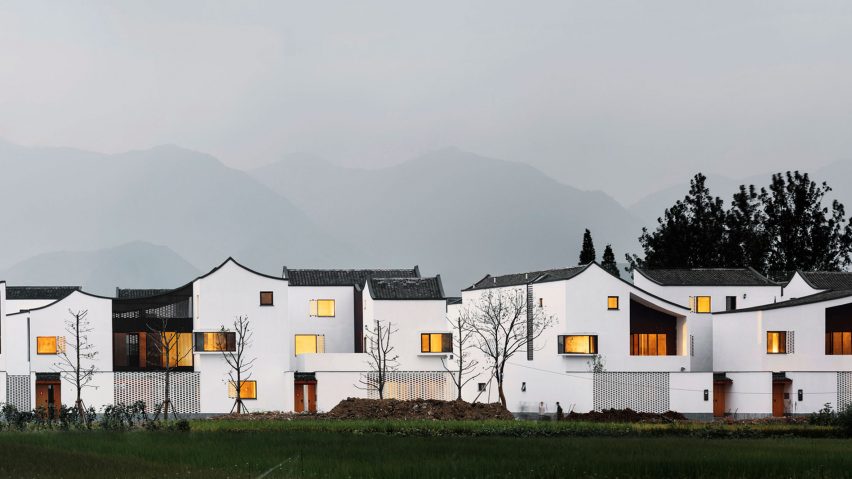
Meanwhile Chinese architecture is lightyears ahead. Just compare Dezeen's top 10 buildings of each country for 2018.
In China, a diverse array of sophisticated projects – from Neri&Hu's monastery-like Yangzhou Retreat to Gad Line+ Studio's prototypical affordable housing village near Hangzhou – reveal a rich play of of proportion, craft and ingenuity. Even a real-estate sales centre in Henan province is transformed in Luo Studio's hands into a soaring gothic carapace of timber vaults.
The US selection on the other hand boats a "flagship McDonald's restaurant". Be still my beating heart!
As western designers, we have often made disparaging remarks about the quality of home-grown Chinese architecture. Sometimes you can sense the smug scent of neocolonial superiority, as we reassure ourselves that the Chinese still need our universities, trade and designers, that the old world order is forever unchanging. Perhaps the astonishing groundswell of compelling work bursting onto the scene in China will make 2018 the year the penny drops.
Traditional architecture blows away the cobwebs
Traditional architects are often mocked by the wider profession as fusty antiquarians. Classicists in particular get a drubbing, and while the stereotype of the privately educated gentleman architect is not without some basis, 2018 showed us there is much more to traditional architecture than this shallow cliche.
Roger Scruton and his backward-looking ilk notwithstanding, a growing movement of talented, often young, traditionalists are blowing away the cobwebs and steadily positioning their work on a more purposeful, accessible platform.
London-based practice Smith and Taylor's teaching at Kingston School of Art for example, which was exhibited in October in Greenwich, revealed that a classical architectural education is not only still relevant today, but may hold the answers to some of the challenges faced by the familiar format of studio teaching.
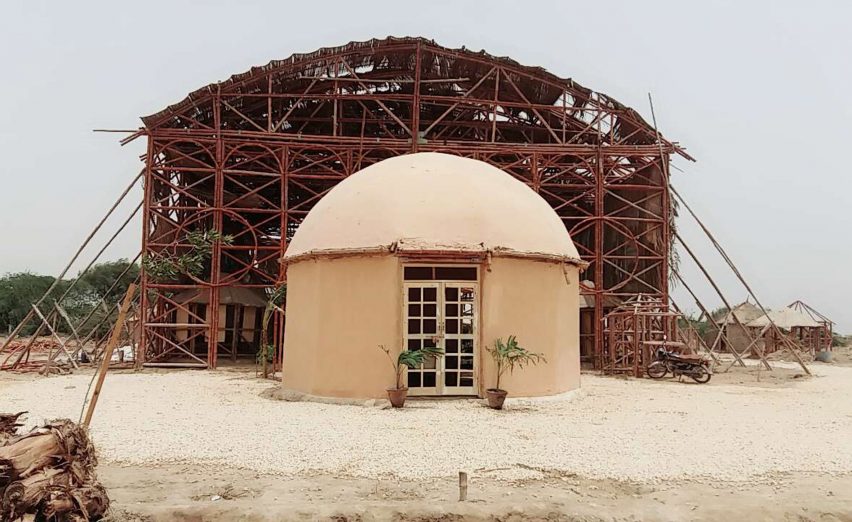
In November, the International Network for Traditional Building, Architecture and Urbanism (INTBAU) held its world congress curated by Harriet Wennberg, bringing some of this community together. The line-up featured a diverse mix of academics and designers using traditional ideas to effect positive change.
Marianne Cusato presented her work creating highly popular classically-proportioned prefabricated kit houses for disaster relief in the wake of Hurricane Katrina.
Yasmeen Lari – co-founder of the Heritage Foundation of Pakistan, and the country's first female architect – showed her Octagreen shelters that, by using traditional building methods, are zero-carbon and far more earthquake-resistant than contemporary structures.
Sandra Piesik, author of Habitat: Vernacular Architecture for a Changing Planet, made the case for rediscovering traditional construction techniques using ultra local materials in the face of epoch-defining global warming.
It is now the non-traditionalist profession, still doggedly specifying carbon-belching concrete, that is starting to look out of date.
Black female architects come together
That the architecture profession suffers from a lack of racial diversity will come as news to nobody. The living legacies of colonialism and slavery, and ever-present structural racism, shape every corner of society including the creative industries.
Black women in particular are under-represented and while many hands are wrung, and many right-on tweets composed, it can be harder to see concrete signs of progress.
Some social mobility advocates say more must be done to raise the aspirations of BAME girls, especially in deprived communities. However in September, the London School of Economics' Millennium Cohort Study revealed that, among young people, the only ethnic group of either gender for which “architect” is among the top three most-desired careers is black girls. Meanwhile, we know from RIBA data that 32 per cent of students taking up architecture degrees are from BAME backgrounds compared to 13 per cent of the population nationally. At least in architecture, lack of aspiration isn't the barrier to diversity, it's something more insidious.
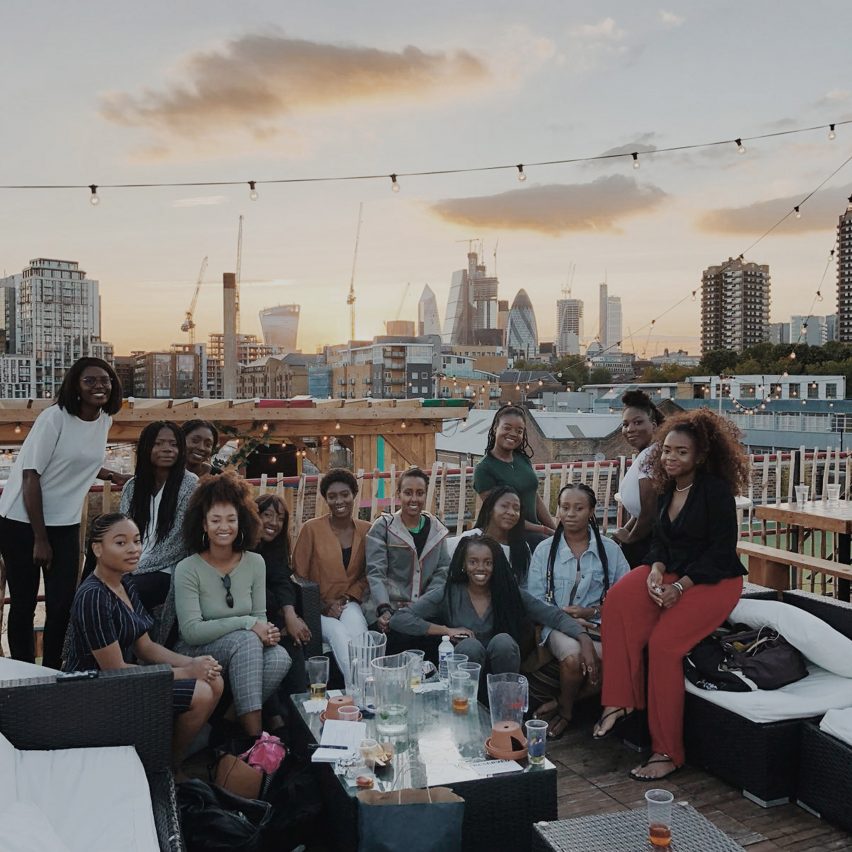
Into this context has stepped Black Females in Architecture (BFA), a new society co-founded by Selasi Setufe, Neba Sere, Alisha Fisher and Akua Danso. These four young black women, who met by chance at an architecture talk in London, were so buoyed by the otherwise vanishingly rare phenomenon of meeting fellow black women at industry events that they decided to establish the network.
BFA now has over 150 members sharing frustrations and advice on WhatsApp and at organised workshops. They have a commission in Bermondsey and have quickly established a brightly burning presence in the profession. For those who care about diversity in architecture, the founding of BFA is one of the biggest leap forwards of 2018.
Planning gets its mojo back
This year marked the 10th anniversary of The Rule of Regulations, a small exhibition curated by Finn Williams with David Knight at the Architecture Foundation's pop-up Closet Gallery in London. In this modest show, Williams and Knight dove deep into the byzantine web of British building regs, applying five pieces of policy to Le Corbusier's 1922 Maison Citrohan.
The compliant but frankensteinian structure that emerged could be read simultaneously as a critique of paranoid Anglo legislative accretion, and as another nail in the coffin of the outmoded CIAM worldview and Corb's Five Points. It was among the first in a cascade of moves which would take Williams on a journey upstream from architecture into the world of policy making.
Appropriately, 2018 also marked the start of another Williams project. A decade on from The Rule of Regulations, he and Pooja Agrawal have launched Public Practice. Somewhere between an embedded fast-track local authority planning crash course and a new strategic research network, the programme places talented designers and other practitioners into the heart of borough planning departments.
In March this year, 17 associates began working in and around London with another cohort to begin in 2019.
Since the 1980s, councils have been starved of in-house design thinking as local authority architects' departments were closed down and planning teams relentlessly squeezed by cuts. Today it is more common to associate planners with myopic design objections than holistic urban strategies – a reputation which erodes public trust in civil servants and the desirability of the planning profession.
Public Practice is nothing short of a quiet revolution channelling the energy of some of Britain's most ambitious young architects into public service where it is needed most. Thanks to Public Practice, 2018 might be remembered as the year planning got its mojo back.
Venice Architecture Biennale remembers Venice
Happanstance, the Scottish Pavilion at the Venice Biennale, was a vivacious triumph of embedded artistic and architectural practice. While the main show busied itself in the Giardini and Arsenale, an hour's walk across town in the Dorsoduro district, Glasgow-based artist collective WaveParticle in collaboration architecture firm Baxendale Studio and local artists, transformed a usually inaccessible palazzo garden into a multi-faceted festival of play, performance and making.
For much of its duration the pavilion was swamped with local children, students and families. It hosted films, workshops and ceilidhs in a melee of activity.
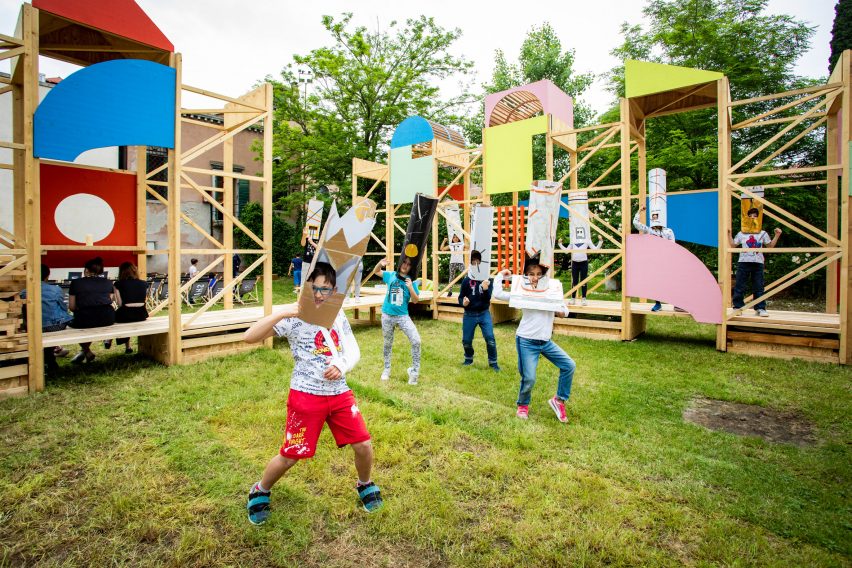
Each year tourism gradually chips away at Venice. In the 1970s, when plans for the first architecture biennale took shape, the population of the historic city was around 170,000. Today it is just 50,000 and falling by 1,000 a year. Publicly accessible spaces are being sold and homes are becoming Airbnbs.
For WaveParticle curator Peter McCaughey, the biennale is too often complicit in this creeping decline, exploiting Venice and Venetians to throw an exclusive industry party.
Happanstance by contrast deployed another tactic, creating a pavilion as much of Glasgow as of Dosoduro. In a biennale which felt at times aloof and detached, the Scottish Pavilion was purposefully present both with visitors and locals.
Scaffold Podcast launches
I am often asked for architecture and design podcast recommendations. There's a few out there: About Buildings and Cities by Luke Jones and George Gingell, Register by Andrew Clancy and of course the inescapable 99% Invisible from Radiotopia. But 2018 saw the launch of a new podcast which I think is simply brilliant and brilliantly simple.
Scaffold by Matthew Blunderfield presents in-depth interviews with architects, artists and designers. They are exceptional discussions. Blunderfield is outstandingly well researched and uses this knowledge to push his interviewees further than familiar journalist-friendly lines with disarming candour. The conversations are complex, reflective and illuminating.
Scaffold is one of the best pieces of new architectural media. It does exactly what top 10 articles usually struggle to, digging that little bit deeper. I hope it thrives in 2019.
Main image shows the Floating University. Photo is by Victoria Tomaschko.